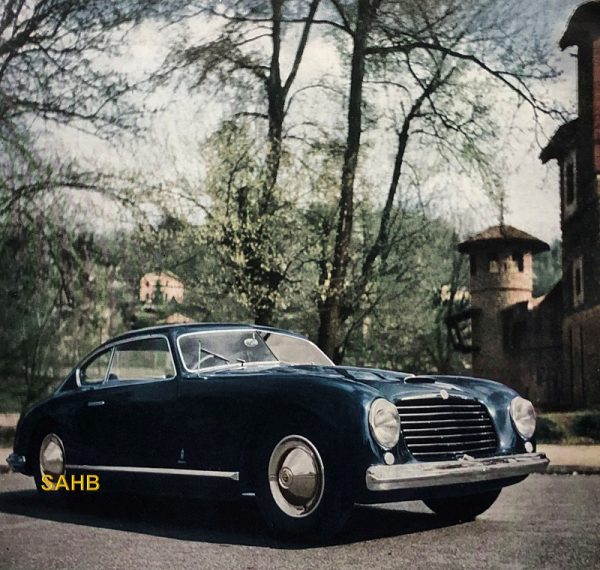
Alfa Romeo applied the 6C name to many of its touring, racing and sports cars between 1925 and 1954. The example in our Snapshot dates from 1950 and is almost certainly a one-off. Another almost identical car that exists today, also claimed to be a one-off, has slightly different headlamps, a different (but only just) grille with two additional auxiliary lights in it, and a bumper with overriders. At this elevated level of bespoke coachbuilding, customers could clearly ask for these subtle differences.
The first 6C was designed by Vittorio Jano and introduced at the 1925 Salone dell’ Automobile di Milano as the 6C 1500. It was based on Alfa’s P2 Grand Prix car, using a single overhead cam 1,487 cc in-line six-cylinder engine. In 1928 the 1500 Sport was presented; it was the first Alfa Romeo road car with twin overhead camshafts. The more powerful 6C 1750 was introduced in 1929 in Rome with a top speed of 95 mph. It was produced in six series between 1929 and 1933. In 1929, the 6C won every major racing event in which it was entered, including the Grands Prix of Belgium, Spain, Tunis and Monza, and the Mille Miglia, the Brooklands Double Twelve and the Ulster TT.
Significant change came in 1934 with the 2300, the first Alfa with a synchromesh gearbox, and in 1936 with the 2300B with all-round independent suspension. Capacity increased in 1938 with the 6C 2500, making this car the first road-going Alfa to be capable of exceeding 100 mph. A few hundred 6C 2500s were built from 1940 to 1945, followed by the 1946 6C 2500 Freccia d’Oro (Golden Arrow), of which 680 were built until late 1951, with bodies by Alfa. Various coachbuilders built their own bespoke versions of the 2500, but most bodywork was built by Touring Superleggera of Milan.
In 1948 a first Alfa Romeo 6C 3000 prototype was built – a 5–6 passenger 4-door saloon car of the same class as the 6C 2500, but which could be built using more modern and economical manufacturing processes. The project was abandoned in 1949 in favour of a smaller four-cylinder car – the Alfa Romeo 1900 – but the 3-litre engine was developed for competition use and powered several Alfa sports racing cars during the first half of the 1950s.
The 6C 2500 was described by the automotive author and historian Griffith Borgeson as a “bridge to post-World War II production”; it was also often called “The Last Great Alfa”.







Leave a Comment